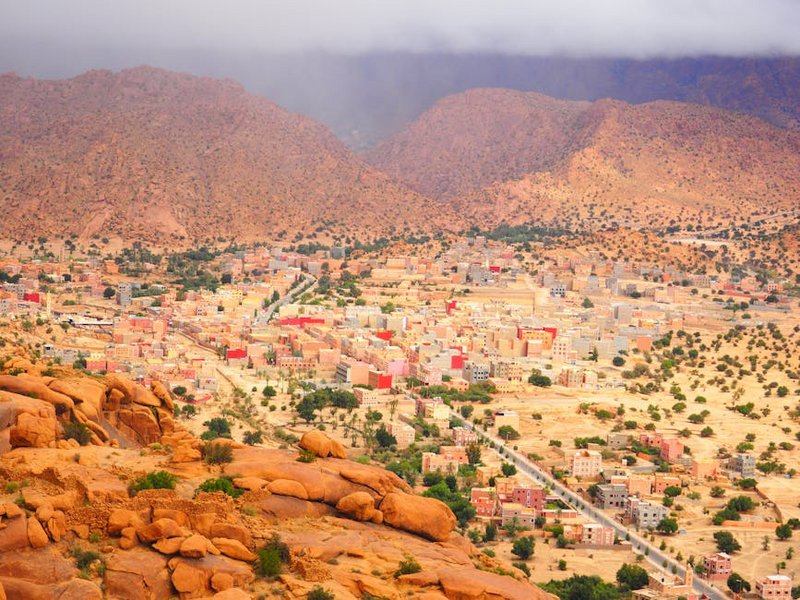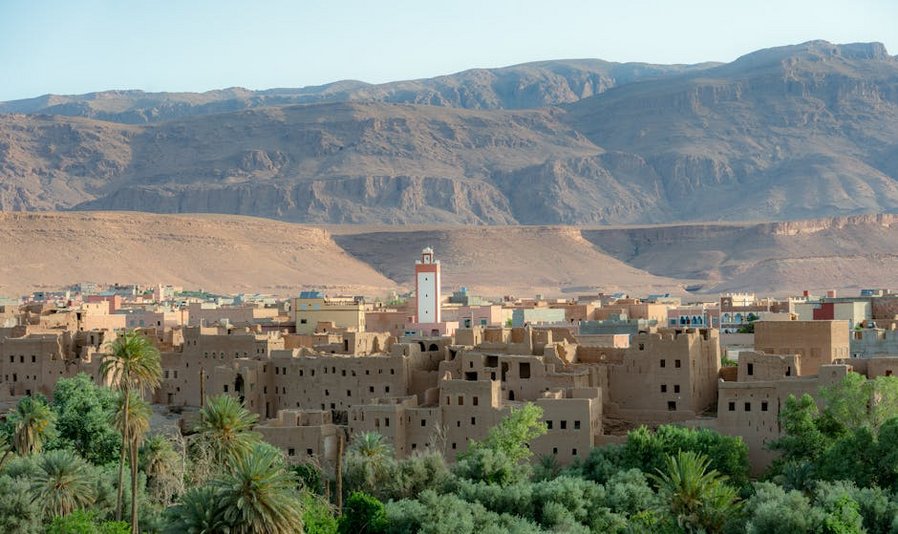Morocco Atlas Mountains Berber Villages: Authentic Cultural Immersion
Exploring the Morocco Atlas Mountains Berber Villages offers travelers an intimate look into centuries-old traditions set against dramatic mountain landscapes where indigenous communities maintain their unique way of life. You’ll discover stone-built villages clinging to hillsides, vibrant weekly souks, and hospitality that transforms visitors into honored guests through shared mint tea and homemade meals. This guide covers everything from navigating rugged trails to understanding Berber customs, ensuring your mountain adventure becomes a meaningful cultural exchange.
Essential Atlas Mountains Information
The High Atlas range stretches 1,600 kilometers across Morocco with peaks reaching 4,167 meters at Jebel Toubkal, creating dramatic valleys where Berber villages have existed for over a thousand years. These communities developed distinct architectural styles using local stone and earth, with terraced agriculture systems that demonstrate remarkable adaptation to mountainous environments. Travelers encounter three main Berber tribal groups across different Atlas regions, each with subtle cultural variations in language, crafts, and traditions.
Geography and Climate Details
The Atlas Mountains divide into three primary ranges with the High Atlas containing most visited Berber villages accessible from Marrakech within 2-3 hours drive. Temperatures vary dramatically by season and altitude, ranging from 75°F (24°C) in valley bottoms to below freezing at higher elevations during winter months. Snow caps the highest peaks from November through April while spring brings wildflowers and moderate conditions ideal for trekking.
Berber Cultural Heritage
Amazigh culture represents North Africa’s indigenous population with traditions preserved through oral history, distinctive jewelry designs, and seasonal festivals celebrating agricultural cycles. Villages maintain communal baking ovens, shared water sources, and collective decision-making processes that reflect deeply ingrained values of cooperation and hospitality. You’ll notice architectural consistency in kasbah-style homes with intricate wooden doors, earthen tones blending into landscapes, and defensive structures speaking to historical needs for protection.
- Traditional crafts include wool rug weaving with symbolic patterns, pottery using local clay, and silver jewelry featuring Amazigh protective symbols passed through generations.
- Village life revolves around agricultural cycles with walnut and almond harvests in autumn, olive picking in winter, and cereal crops harvested in early summer months.
- Cultural preservation efforts include Tamazight language schools, women’s cooperatives marketing handicrafts, and homestay programs that directly benefit local households.
- Budget travelers spend $30-50 daily using shared taxis, village homestays at $15-25 nightly, and local guide services for $25-40 daily, focusing on self-catering and group arrangements.
- Mid-range options cost $80-120 daily featuring private rooms in guesthouses, certified mountain guides, luggage transport by mule, and most meals included at traditional restaurants.
- Luxury experiences reach $200-300 daily with private vehicle transfers, boutique hotel accommodation, expert cultural guides, and customized itineraries including cooking classes and special access.
- Moroccan National Tourist Office
- Lonely Planet Atlas Mountains Guide
Historical Context and Modern Life
Berber communities have inhabited the Atlas Mountains since at least 2000 BCE, developing sophisticated irrigation systems and trade routes that connected Saharan Africa with Mediterranean ports. French colonial period introduced road infrastructure but limited cultural expression, leading to renewed Amazigh identity movements following Morocco’s independence in 1956. Today, villages balance tradition with modernity through solar power installations, mobile networks, and youth pursuing education while maintaining connection to ancestral lands.

Alt: “atlas-mountains-berber-village-stone-houses-valley”
Planning Your Morocco Atlas Mountains Berber Villages Trip
Successful Morocco Atlas Mountains Berber Villages exploration requires careful timing between April-May or September-October when temperatures range 60-75°F (15-24°C) with minimal rainfall disrupting mountain access. Budget $50-80 daily for basic trekking with guide services, homestay accommodation, and local meals, while luxury private tours approach $200-300 daily including vehicle support and premium riad stays. Physical preparation should include previous hiking experience carrying daypacks, broken-in footwear for rocky trails, and flexibility for itinerary changes due to weather conditions.
Best Time to Visit Atlas Mountains
April through June delivers ideal conditions with daytime temperatures 65-80°F (18-27°C), clear mountain views, and vibrant greenery following spring snowmelt feeding valley streams. July-August brings hotter conditions reaching 90°F (32°C) in lower valleys but remains pleasant at higher elevations, though afternoon thunderstorms occasionally disrupt trekking plans. September-November offers comfortable 60-75°F (15-24°C) temperatures with autumn colors and harvest activities, while December-March sees snow above 2,000 meters requiring specialized gear for high passes.
Budget Planning and Costs
Moroccan dirham exchange rates create favorable conditions for Western travelers with daily budgets covering all essentials from accommodation to guided services.
Essential Preparation Checklist
Physical conditioning should include regular hiking with elevation gain, as trails frequently climb 300-800 meters daily across uneven terrain requiring good balance and stamina. Pack layered clothing for temperature swings, sturdy broken-in hiking boots, sun protection, reusable water bottles, and basic first aid supplies for remote areas without pharmacies. Arrange comprehensive travel insurance covering mountain rescue, secure Moroccan visa if required from your country, and download offline maps plus essential Tamazight phrases for basic communication.
Top Attractions and Cultural Experiences
Imilchil Marriage Festival each September draws Berber communities from across the Atlas for traditional celebrations, matchmaking rituals, and vibrant displays of regional costumes and music. Aït Benhaddou ksar represents UNESCO-protected earthen architecture where guided tours explain defensive structures, granaries, and caravanserai functions along ancient trade routes. Ourika Valley day trips from Marrakech introduce Berber village life through terraced gardens, argan oil cooperatives, and riverside restaurants serving tagine cooked over open fires.
Must-See Mountain Highlights
Toubkal National Park encompasses North Africa’s highest peak with multi-day treks through Azzaden Valley passing seasonal shepherd settlements and ancient juniper forests at 3,000 meters elevation. Dades Valley features dramatic gorges with winding roads overlooking palm groves, where guided hikes connect traditional kasbahs and fossil-rich geological sites explaining the region’s prehistoric ocean history. M’Goun Massif trekking routes traverse remote canyons with rock art sites, requiring local guides to navigate seasonal river crossings and identify camping spots near nomadic pastoralist encampments.
Hidden Gems and Local Favorites
Anmiter village preserves pre-Islamic granaries built into cliff faces, accessible via moderate hiking trails where residents demonstrate traditional grain storage techniques and share stories of ancestral food preservation. Tizgui Valley remains largely undiscovered by tourism, offering homestays in mud-brick homes where families teach bread-making in outdoor ovens and identify medicinal plants used in Berber herbal medicine. Setti Fatma waterfalls involve scenic climbs past seven cascades with local guides explaining spiritual significance and pointing out optimal photography angles during morning light.
Trekking and Adventure Options
Multi-day mule-supported treks follow ancient salt trading routes between villages, with options ranging from 3-day circular routes to 10-day trans-Atlas expeditions crossing multiple climate zones. Cultural trekking combines hiking with hands-on experiences like wool spinning workshops, henna application ceremonies, and overnight stays in seasonal pasture settlements used by semi-nomadic communities. Winter ascents of Jebel Toubkal require technical equipment and experienced guides, while spring valley walks focus on wildflower identification and photography amidst blooming almond and apple orchards.
Practical Travel Information
Marrakech Menara Airport (RAK) serves as primary gateway with frequent flights from European hubs, requiring 2-3 hour drives to mountain trailheads using pre-booked transfers or rental vehicles. Accommodation spans basic village homestays with shared facilities to renovated kasbahs featuring swimming pools and hammams, with advance reservations essential during April-May and September-October peak seasons. Local transportation combines grand taxis between valleys, occasional public buses on main routes, and organized treks with mule transport for luggage between overnight stops.
| Accommodation Type | Features and Amenities | Price Range (USD) |
|---|---|---|
| Village Homestay | Shared rooms, home-cooked meals, cultural immersion | $15-25/night |
| Guesthouse/Gite | Private rooms, hot showers, mountain views | $35-60/night |
| Boutique Hotel | Pool, restaurant, guided activities | $80-150/night |
| Luxury Kasbah | Spa, private guides, gourmet dining | $200-350/night |


